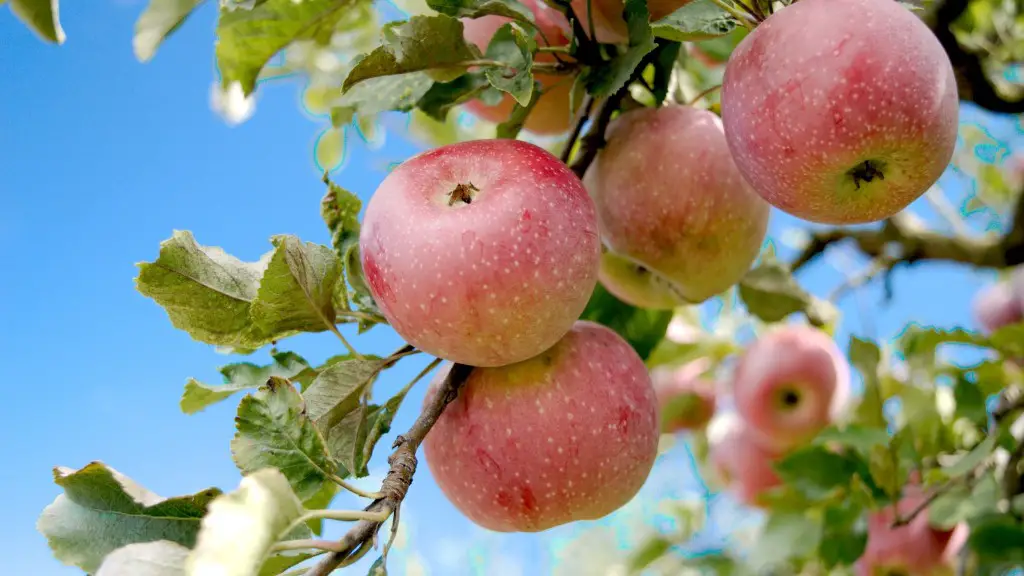When deciding when to prune an apple tree, there are several factors to consider. Typically, pruning should be done during the tree’s dormancy, which takes place in late winter/early spring. This will reduce the risk of pruning away actively growing shoots, helping to prevent future tree diseases. Once the tree is dormant, pruning helps to ensure the maximum nutrient intake is achieved by thinning out overcrowded shoots and branches. Pruning also helps to provide the much-needed light for better flowering and fruit development. Furthermore, pruning controls the size and shape of the trees making them easier to manage in the long run.
Reasons to Prune an Apple Tree
Firstly, pruning apple trees helps to encourage the formation of fruiting spurs. This type of pruning helps to alleviate the crowding between branches by thinning out overcrowded shoots and branches. Pruning helps to maintain an adequate supply of light and nutrients to the tree, while keeping the tree’s height to a manageable size. This results in better growth, flowering, and fruit production. Furthermore, pruning helps to reduce the risk of disease by removing diseased wood, removing affected fruit, and thinning out weak stems. Pruning also eliminates any potential branches that are encroaching on other parts of the tree, allowing more oxygen and light to properly reach the entire tree.
Preparing Apple Trees for Pruning
Before pruning, it’s important to understand the habits of the tree and the type of pruning that needs to be done. Pruning should be done during the apple tree’s period of dormancy, which typically occurs from late winter to early spring. Before pruning, inspect the tree and make sure that there are no dead or diseased branches and that the shoots are not overcrowded. During the pruning process, make sure to disinfect the pruning tools between cuts, to avoid further spread of diseases.
Tools & Techniques For Pruning Apple Trees
It’s important to use the right tools when pruning an apple tree. Shears and loppers are essential for cutting thicker or small branches, while pruning saws are necessary for larger branches. Many times, trees may require thinning out or removal of larger branches or trunks, which can only be done with a saw or an arborist. To remove diseased wood, it’s important to find the area of infection and cut out the diseased material with a sterilized tool.
Pruning for Shaping and Limbing
Pruning can also be used to shape and limb up an apple tree. Limbing up a tree helps to remove excessive growth and open up the tree, allowing more light and air to penetrate the interior of the tree. This improves the overall health of the tree, allowing more light and nutrients to reach the fruits and flowers. This type of pruning should be done in stages, with less drastic cuts followed by more severe cuts taken in the second pruning cycle. This will help to promote healthy growth and prevent excessive dieback.
Trimming vs. Pruning
Trimming and pruning are not the same thing, though they are sometimes confused. Trimming is a form of maintenance, where dead or diseased branches are removed and dead or diseased parts of the tree are removed. Pruning is a more complex form of maintenance, where shoots and branches are thinned out or removed to shape, open up, or improve the overall health of the tree. It is important to understand the difference between pruning and trimming when considering when to prune an apple tree.
Preventing Diseases When Pruning an Apple Tree
Apple trees are susceptible to a variety of diseases and pests. When pruning an apple tree, it is important to take the necessary precautions to prevent the risk of spreading any potential diseases. Make sure to inspect the tree thoroughly, looking for any potential diseases or pest infestations. If you do find any, it’s important to remove affected wood with a sterilized tool and dispose of it away from the tree. Additionally, make sure to disinfect the tools between cuts, to avoid further spread of diseases.

